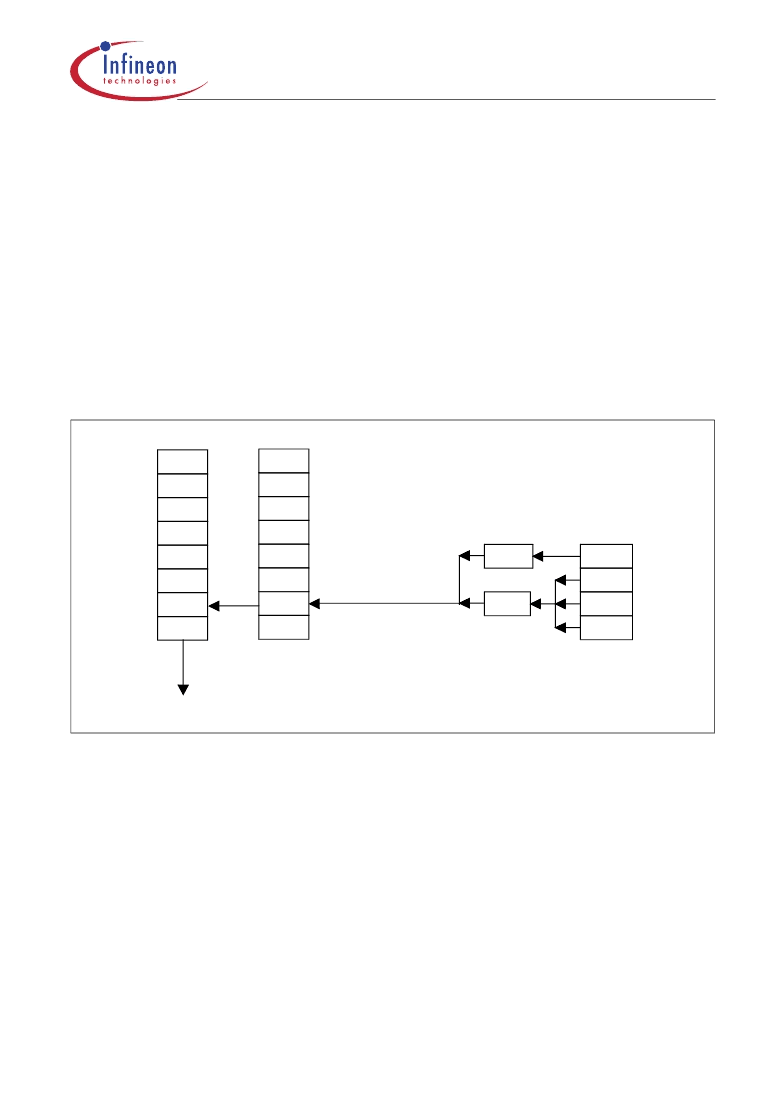- 您現(xiàn)在的位置:買賣IC網(wǎng) > PDF目錄378048 > PEB3086 (INFINEON TECHNOLOGIES AG) ISDN SUBSCRIBER ACCESS CONTROLLER PDF資料下載
參數(shù)資料
| 型號: | PEB3086 |
| 廠商: | INFINEON TECHNOLOGIES AG |
| 英文描述: | ISDN SUBSCRIBER ACCESS CONTROLLER |
| 中文描述: | ISDN用戶接入控制器 |
| 文件頁數(shù): | 119/262頁 |
| 文件大?。?/td> | 3476K |
| 代理商: | PEB3086 |
第1頁第2頁第3頁第4頁第5頁第6頁第7頁第8頁第9頁第10頁第11頁第12頁第13頁第14頁第15頁第16頁第17頁第18頁第19頁第20頁第21頁第22頁第23頁第24頁第25頁第26頁第27頁第28頁第29頁第30頁第31頁第32頁第33頁第34頁第35頁第36頁第37頁第38頁第39頁第40頁第41頁第42頁第43頁第44頁第45頁第46頁第47頁第48頁第49頁第50頁第51頁第52頁第53頁第54頁第55頁第56頁第57頁第58頁第59頁第60頁第61頁第62頁第63頁第64頁第65頁第66頁第67頁第68頁第69頁第70頁第71頁第72頁第73頁第74頁第75頁第76頁第77頁第78頁第79頁第80頁第81頁第82頁第83頁第84頁第85頁第86頁第87頁第88頁第89頁第90頁第91頁第92頁第93頁第94頁第95頁第96頁第97頁第98頁第99頁第100頁第101頁第102頁第103頁第104頁第105頁第106頁第107頁第108頁第109頁第110頁第111頁第112頁第113頁第114頁第115頁第116頁第117頁第118頁當(dāng)前第119頁第120頁第121頁第122頁第123頁第124頁第125頁第126頁第127頁第128頁第129頁第130頁第131頁第132頁第133頁第134頁第135頁第136頁第137頁第138頁第139頁第140頁第141頁第142頁第143頁第144頁第145頁第146頁第147頁第148頁第149頁第150頁第151頁第152頁第153頁第154頁第155頁第156頁第157頁第158頁第159頁第160頁第161頁第162頁第163頁第164頁第165頁第166頁第167頁第168頁第169頁第170頁第171頁第172頁第173頁第174頁第175頁第176頁第177頁第178頁第179頁第180頁第181頁第182頁第183頁第184頁第185頁第186頁第187頁第188頁第189頁第190頁第191頁第192頁第193頁第194頁第195頁第196頁第197頁第198頁第199頁第200頁第201頁第202頁第203頁第204頁第205頁第206頁第207頁第208頁第209頁第210頁第211頁第212頁第213頁第214頁第215頁第216頁第217頁第218頁第219頁第220頁第221頁第222頁第223頁第224頁第225頁第226頁第227頁第228頁第229頁第230頁第231頁第232頁第233頁第234頁第235頁第236頁第237頁第238頁第239頁第240頁第241頁第242頁第243頁第244頁第245頁第246頁第247頁第248頁第249頁第250頁第251頁第252頁第253頁第254頁第255頁第256頁第257頁第258頁第259頁第260頁第261頁第262頁

ISAC-SX
PEB 3086
Description of Functional Blocks
Data Sheet
119
2003-01-30
3.7.3.6
Figure 63
shows the MONITOR interrupt structure of the ISAC-SX. The MONITOR Data
Receive interrupt status
MDR
has two enable bits, MONITOR Receive interrupt Enable
(
MRE
) and MR bit Control (
MRC
). The MONITOR channel End of Reception
MER
,
MONITOR channel Data Acknowledged
MDA
and MONITOR channel Data Abort
MAB
interrupt status bits have a common enable bit MONITOR Interrupt Enable
MIE
.
MRE
prevents the occurrence of
MDR
status, including when the first byte of a packet is
received. When
MRE
is active (1) but
MRC
is inactive, the
MDR
interrupt status is
generated only for the first byte of a receive packet. When both
MRE
and
MRC
are
active,
MDR
is always generated and all received MONITOR bytes - marked by a 1-to-0
transition in MX bit - are stored. (Additionally, an active
MRC
enables the control of the
MR handshake bit according to the MONITOR channel protocol.)
MONITOR Interrupt Logic
Figure 63
MONITOR Interrupt Structure
3.7.4
The Command/Indication channel carries real-time status information between the
ISAC-SX and another device connected to the IOM-2 interface.
1. One C/I channel (called C/I0) conveys the commands and indications between the
layer-1 and the layer-2 parts of the ISAC-SX. It can be accessed by an external layer-
2 device e.g. to control the layer-1 activation/deactivation procedures. C/I0 channel
access may be arbitrated via the TIC bus access protocol. In this case the arbitration
is done in IOM-2 channel 2 (see
Figure 46
).
The C/I0 channel is accessed via register CIR0 (in receive direction, layer-1 to layer-2)
and register CIX0 (in transmit direction, layer-2 to layer-1). The C/I0 code is four bits
long. A listing and explanation of the layer-1 C/I codes can be found in
Chapter 3.5.4
.
C/I Channel Handling
ST
CIC
WOV
MOS
ICD
TRAN
Interrupt
ISTA
ICB
MASK
ICB
ST
CIC
WOV
MOS
ICD
TRAN
MRE
MDR
MER
MIE
MOCR
MDA
MAB
MOSR
相關(guān)PDF資料 |
PDF描述 |
|---|---|
| PEB31665 | NMultichannel Subscriber Line Interface Concept MuSLIC |
| PEB3465 | NMultichannel Subscriber Line Interface Concept MuSLIC |
| PEB4165 | NMultichannel Subscriber Line Interface Concept MuSLIC |
| PEB3445E | Ultraframer DS3/E3/DS2/E2/DS1/E1/DS0 |
| PEB35512 | Global Enhanced Multiport Integrated ADSL Transceiver |
相關(guān)代理商/技術(shù)參數(shù) |
參數(shù)描述 |
|---|---|
| PEB3086FV1.4 | 制造商:Lantiq 功能描述: |
| PEB3086FV1.4- | 制造商:Lantiq 功能描述: |
| PEB3086FV1.4 TR | 制造商:Lantiq 功能描述: |
| PEB3086HV1.4 | 功能描述:ISDN 接口 ISDN RoHS:否 制造商:Texas Instruments 封裝:Tube |
| PEB3164FV1.1 | 功能描述:接口—CODEC CODEC & SLIC RoHS:否 制造商:Texas Instruments 類型: 分辨率: 轉(zhuǎn)換速率:48 kSPs 接口類型:I2C ADC 數(shù)量:2 DAC 數(shù)量:4 工作電源電壓:1.8 V, 2.1 V, 2.3 V to 5.5 V 最大工作溫度:+ 85 C 安裝風(fēng)格:SMD/SMT 封裝 / 箱體:DSBGA-81 封裝:Reel |
發(fā)布緊急采購,3分鐘左右您將得到回復(fù)。